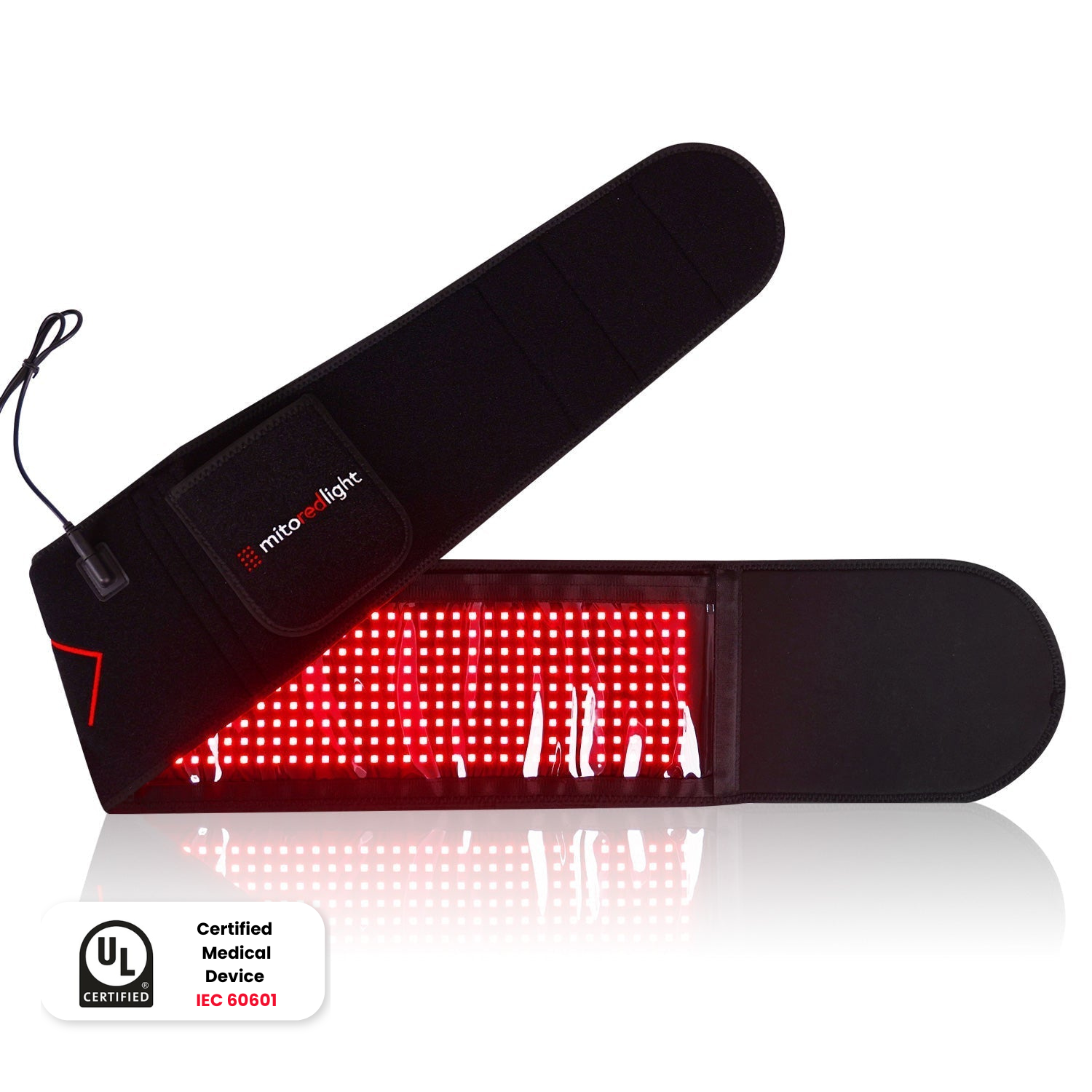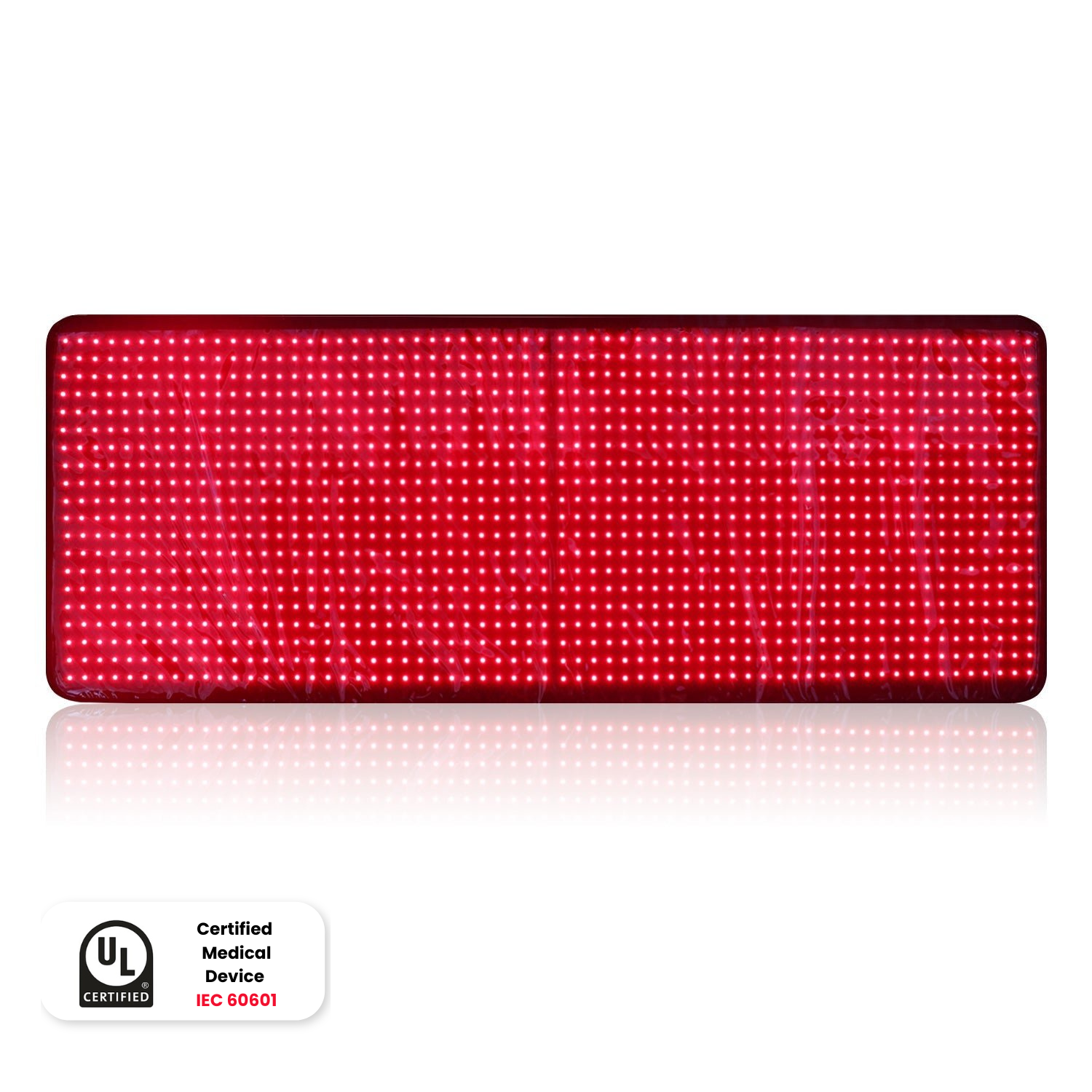DISCLAIMER: Mito Red Light devices are Class II wellness devices aimed at affecting the body through topical heating and supporting cellular function. The information provided in this article and on this site is for educational purposes only and is not intended to imply effectiveness of Mito Red Light devices for any specific application. The information provided in this article and on this site is not intended to diagnose, treat, cure, or prevent any disease, is not a substitute for consultation with a licensed medical provider and should not be construed as medical advice. Click here to read our article on potential contraindications of red light therapy..
Medically Reviewed by | Heidi Wright, BSN, RN, PCCN
The use of light for therapeutic purposes isn’t new. Egyptian and Greek records show that photobiomodulation (the use of light to heal or treat the body) was thought to be effective in ancient medicine and is still in use today. Today, however, we have access not only to numerous different types of light, but also to research, scientific studies, and trials to prove their efficacy.
If you find yourself a little “LED light therapy curious,” you’re in luck. The team of phototherapy experts at Mito Red Light will cover the different types of light, what each color of light is used for, and how you can implement your own light therapy sessions at home.
Is LED Light Therapy Really Effective?
Light-emitting diode therapy (LED therapy) is a form of photomedicine that uses light to address specific health concerns. While it’s understandable that someone who isn’t familiar with LED therapy might consider it a snake oil treatment, there’s plenty of research to back up its benefits and use.
Even without research, you can understand that light is able to interact with the body simply by observing how your skin reacts when exposed to UV light. UV light causes the skin to tan and sometimes burn, and it also reacts with the cholesterol in your skin to produce essential vitamin D.
There’s also plenty of established research that tells us that some forms of light (like blue light from LED televisions, computers, and smartphones) can negatively impact our sleep cycles and even lead to headaches and eye strain.
New technology (originally developed by NASA) has allowed us to harness other wavelengths of light and use them as options for everything from skincare to athletic performance. These benefits are scientifically researched and backed, so you can trust the legitimacy of the claims.
How Does LED Light?
Different light has different wavelengths. For instance, UV light has short, high-energy wavelengths. These wavelengths don’t penetrate deep into the body, and too much exposure to them can cause skin damage.
Other wavelengths of light (including parts of the visible and invisible light spectrum) are longer and lower energy, giving them the ability to penetrate the skin and, in some cases, reach soft and hard tissue to stimulate the cells that make up those tissues. By interacting with cells, light therapy may help stimulate the way the cells behave, improving cell function by:
- Stimulating mitochondrial energy production (known as ATP production)
- Increasing the rate of skin cell turnover
- Addressing inflammation at the source
- Releasing tightness in muscles and joints
- Supporting homeostatic functions like sleep and mood
Not all forms of LED light are capable of providing all of these benefits. Some are able to penetrate the skin deeper than others and address different health concerns. Let’s talk about the usable forms of LED light and what they might be beneficial for.
What Are the Different Types of LED Light?
There are primarily four different types of LED light that are used for both medical and cosmetic benefits. These different wavelengths of light effectively reach certain tissues in the body, interacting with the cells that make them up and helping stimulate them to function more efficiently. Better functioning cells lead to better functioning structures.
Blue Light
Although it mostly gets a bad rap for being intrusive and damaging, there are benefits to blue light for your skin. This light is part of the visible spectrum of light and is emitted by the sun and devices like tablets and smartphones. However, it can also be used in small doses to help address certain problems with the epidermis.
Blue light doesn’t penetrate the skin, but it can be effective in managing certain types of sun damage and pre-cancerous lesions on the skin and addressing blemishes caused by P. acnes bacteria. Blue light does have side effects, like peeling and irritation, so it’s best to have blue light sessions under the care of a dermatologist.
Yellow Light
With a slightly longer wavelength (measuring between 570 nm and 620 nm), yellow light penetrates the skin slightly deeper, which means it can do more work. Yellow light is used to help with skin rejuvenation and lymphatic drainage. It’s also sometimes referred to as amber light.
Because its penetration is shallow, you’d want to use yellow light to address issues like visible broken capillaries, skin irritation, and redness, and to encourage lymphatic drainage, which can help reduce puffiness.
Red Light
With a wavelength that measures between 620 nm and 700 nm, red light has the ability to penetrate the skin deeply. Originally developed by NASA to help heal astronauts’ wounds while in orbit, red light may stimulate the mitochondria in our cells to make more energy and help promote increased cell turnover. Red light might also target fibroblasts, the cells that are responsible for collagen production, helping your skin make more of this essential skin-plumping protein.
With red light, you may be able to help with or aid visible signs of aging like:
- Fine lines and wrinkles
- Loss of skin’s resilience
- Skin’s firmness and fullness
- Uneven skin tone and texture
Red light therapy might also help with or aid other skin concerns like eczema, psoriasis, and rosacea.
Near-Infrared Light Therapy
The next level of light therapy is referred to as near-infrared or NIR light therapy. This light has a wavelength between 800 nm and 900 nm and can penetrate deep into the body, through the skin to the muscle and bone.
NIR light therapy may be able to help with:
- Muscle pain and soreness
- Joint issues and stiffness
- Hair growth
- Mood and cognitive health
- Sleep quality
- Athletic performance
- Muscle recovery
With NIR light therapy, you might be able to address issues that are further than skin deep, but only if you have a high-quality NIR light device. Be wary of machines (either for at-home use or even in gyms and spas) that claim they can help with muscle and joint pain or speed up athletic recovery but do not offer NIR light wavelengths. It’s always important to ask for the specific light wavelength in nanometers to be sure the machine is capable of addressing the issues you want to tackle.
How To Use Light Therapy at Home
You can use light therapy devices at home for up to 20 minutes per body part per day, and it’s best to always use your devices as instructed and consult a healthcare provider before starting RLT.
Although red light has no known negative side effects, it’s important to make sure you protect your eyes during RLT if you are particularly sensitive to light. Also, if you have sensitive skin, make sure you pay attention to your body if you develop skin irritation after using a wearable device.
Why Choose Mito Red Light?
Using LED therapy at home is more accessible than ever, and Mito Red Light is your go-to source for the highest quality, at-home red light and NIR light devices. Our devices contain more diodes per square inch than our competitors, resolving the “dead space” issue and ensuring that every minute you spend in front of our lights or with our flexible, wearable devices is a minute spent healing and restoring your body.
Our Lights
Our RLT devices are specially formatted with Enhanced Spectral Energy Output™, a technology that delivers energy across more spectrums of red and NIR light.
Our MitoPRO series offers multi-wavelengths that give you access to even more spectrums of red and NIR light and contains an even split of the four peak action spectra LEDs for even coverage. You’ll never experience a polka-dot effect with our products.
Our Testing
Our lights are third-party tested and diagnostically tested to ensure our RLT products are within the therapeutic window of treatment as defined by scientific testing and research.
Combined with our risk-free 60-day trial and superior customer service, Mito Red Light is ahead of the competition and offers the best value for your money.
Lights, Camera, Rejuvenation
Your key to wellness and rejuvenation is in wavelengths of light. Using these non-invasive light therapies, you can address a myriad of skin and health conditions without medications or procedures. It’s a natural, holistic way to approach your health that is backed by decades of research and trials.
So go ahead, get your skin (and your body) into the light. Mito Red Light makes it easy for you to give the green light to red light at home.
Sources:
Blue light has a dark side | Harvard Health
Transcranial near-infrared light in treatment of neurodegenerative diseases | Frontiersin.org
LED Light Therapy: How It Works, Colors, Benefits & Risks | My Cleveland Clinic.org































